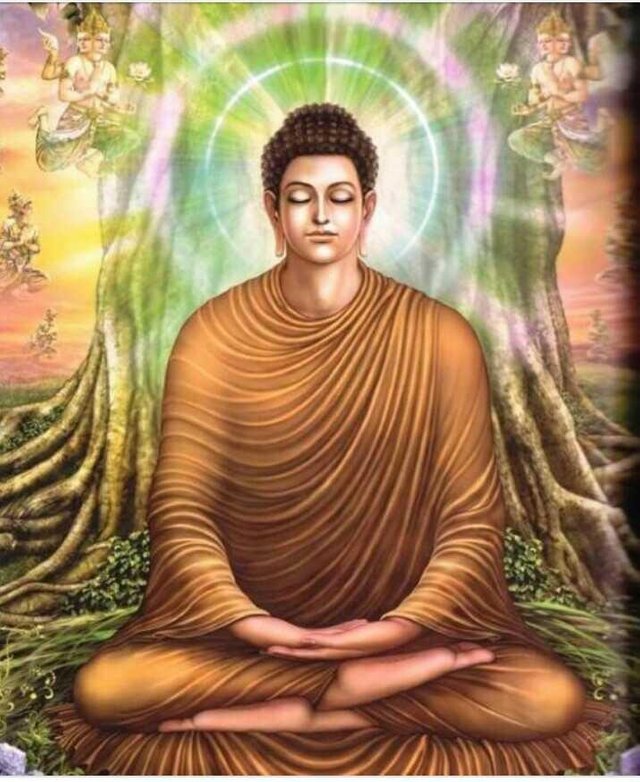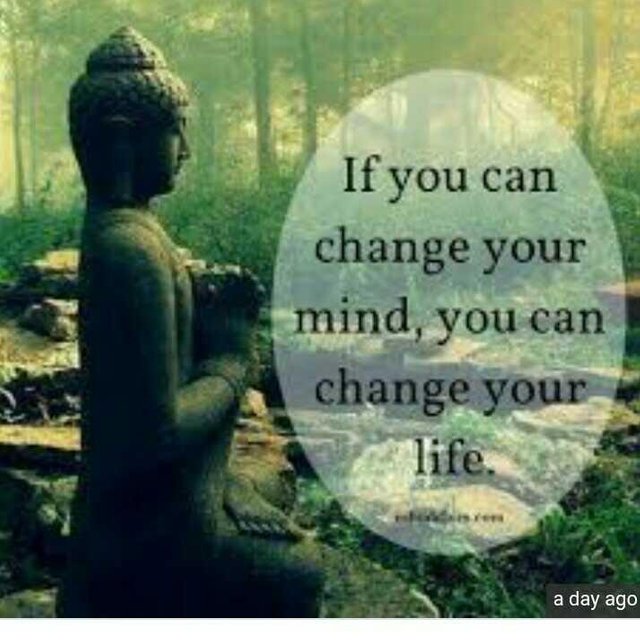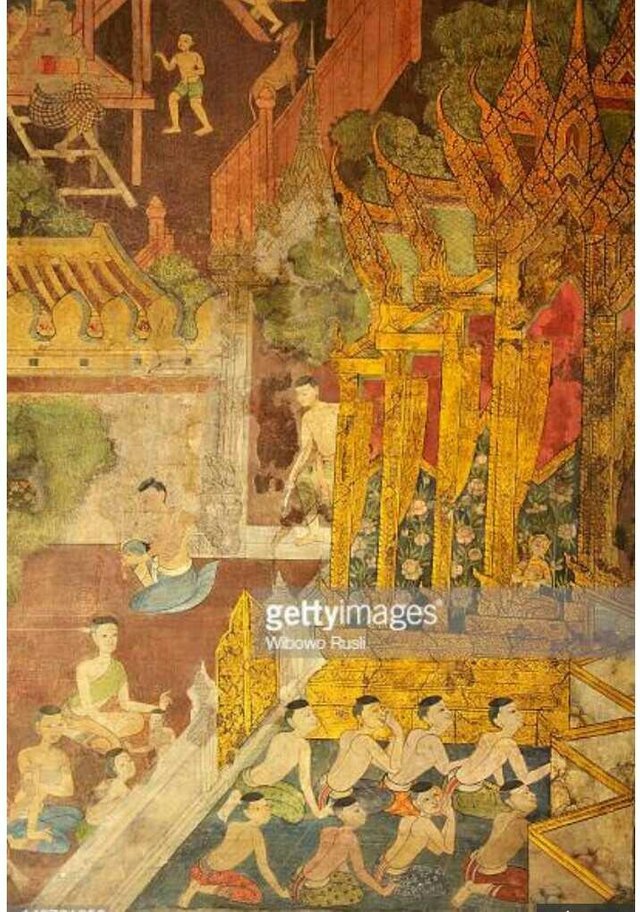GAUTAM BUDDHA (SIDDHARTHA)
Who is GAUTAM BUDDHA

Gautama Buddha otherwise called Siddhārtha Gautama,Shakyamuni Buddha,or basically the Buddha, after the title of Buddha, was a plain (śramaṇa) and sage,on whose lessons Buddhism was founded. He is accepted to have lived and educated for the most part in the eastern piece of antiquated India at some point between the sixth and fourth hundreds of years BCE.
Gautama educated a Middle Way between exotic liberality and the serious monkish life found in the śramaṇa movement basic in his area. He later educated all through different districts of eastern India, for example, Magadha and Kosala.
Gautama is the essential figure in Buddhism. He is accepted by Buddhists to be an illuminated educator who achieved full Buddhahood and shared his bits of knowledge to enable conscious creatures to end resurrection and enduring. Records of his life, talks and ascetic guidelines are accepted by Buddhists to have been outlined after his demise and remembered by his supporters. Different accumulations of lessons credited to him were passed around oral convention and first dedicated to expounding on 400 years after the fact.
In Vaishnava Hinduism, the notable Buddha is thought to be a symbol of the Hindu god Vishnu. Of the ten noteworthy symbols of Vishnu, Vaishnavites trust Gautama Buddha to be the ninth and latest manifestation.
GAUTAM BUDDHA HISTORY

Researchers are reluctant to make unfit claims about the authentic actualities of the Buddha's life. A great many people acknowledge that the Buddha lived, instructed, and established a devout request amid the Mahajanapada period amid the rule of Bimbisara the leader of the Magadha domain, and kicked the bucket amid the early long stretches of the rule of Ajatasatru, who was the successor of Bimbisara, in this manner making him a more youthful contemporary of Mahavira, the Jain tirthankara.Apart from the Vedic Brahmins, the Buddha's lifetime matched with the prospering of powerful Śramaṇa schools of thought like Ājīvika, Cārvāka, Jainism, and Ajñana. Brahmajala Sutta records sixty-two such schools of thought. It was likewise the time of powerful masterminds like Mahavira (alluded to as 'Nigantha Nataputta' in Pali Canon), Pūraṇa Kassapa, Makkhali Gosāla, Ajita Kesakambalī, Pakudha Kaccāyana, and Sañjaya Belaṭṭhaputta, as recorded in Samaññaphala Sutta, whose perspectives the Buddha assuredly probably been familiar with.Indeed, Sariputta and Moggallāna, two of the preeminent supporters of the Buddha, were in the past the first trains of Sañjaya Belaṭṭhaputta, the sceptic; and the Pali group every now and again portrays Buddha taking part in discuss with the followers of opponent schools of thought. There is additionally philological confirmation to propose that the two bosses, Alara Kalama and Uddaka Ramaputta, were for sure recorded figures and they most likely showed Buddha two distinct types of thoughtful techniques.Thus, Buddha was only one of the numerous śramaṇa thinkers of that time. In a period where blessedness of individual was judged by their level of asceticism,Buddha was a reformist inside the śramaṇa development, as opposed to a reactionary against Vedic Brahminism While the general grouping of "birth, development, renunciation, hunt, arousing and freedom, educating, passing" is broadly accepted,there is less agreement on the veracity of numerous subtle elements contained in customary biographies.
The seasons of Gautama's introduction to the world and demise are unverifiable. Most students of history in the mid twentieth century dated his lifetime as around 563 BCE to 483 BCE.More as of late his passing is dated later, in the vicinity of 411 and 400 BCE, while at a symposium on this inquiry held in 1988, the lion's share of the individuals who displayed unmistakable conclusions gave dates inside 20 years either side of 400 BCE for the Buddha's death.These elective sequences, be that as it may, have not been acknowledged by all historians.
The confirmation of the early messages recommends that Siddhārtha Gautama was naturally introduced to the Shakya family, a network that was on the outskirts, both topographically and socially, of the eastern Indian subcontinent in the fifth century BCE. It was either a little republic, or a government, and his dad was a chosen chieftain, or oligarch.According to the Buddhist convention, Gautama was conceived in Lumbini, now in cutting edge Nepal, and brought up in the Shakya capital of Kapilvastu, which may have been either in what is available day Tilaurakot, Nepal or Piprahwa, India.He acquired his edification in Bodh Gaya, gave his first lesson in Sarnath, and kicked the bucket in Kushinagar.
No composed records about Gautama were found from his lifetime or from the maybe a couple hundreds of years from that point. Amidst the third century BCE, a few Edicts of Ashoka (ruled around 269-232 BCE) specify the Buddha, and especially Ashoka's Rummindei Minor Pillar Edict celebrates the Emperor's journey to Lumbini as the Buddha's origination . Another of his orders specifies the titles of a few Dhamma writings, building up the presence of a composed Buddhist custom in any event when of the Maurya time. These writings might be the antecedent of the Pāli Canon.The most established surviving Buddhist original copies are the Gandhāran Buddhist writings, answered to have been found in or around Haḍḍa close Jalalabad in eastern Afghanistan and now saved in the British Library. They are composed in the Gāndhārī dialect utilizing the Kharosthi content on twenty-seven birch bark original copies and date from the primary century BCE to the third century CE.
Based on philological proof, Indologist and Pali master Oskar von Hinüber says that a portion of the Pali suttas have held exceptionally obsolete place-names, sentence structure, and recorded information from near the Buddha's lifetime, including the Mahāparinibbāṇa Sutta which contains a point by point record of the Buddha's last days. Hinüber proposes a sythesis date of no later than 350– 320 BCE for this content, which would take into account a "genuine verifiable memory" of the occasions around 60 years earlier if the Short Chronology for the Buddha's lifetime is acknowledged (yet additionally reminds that such a content was initially planned more as hagiography than as a correct authentic record of events).
Utilization of Brahmanical themes
In the Pali Canon, the Buddha utilizes numerous Brahmanical gadgets. For instance, in Samyutta Nikaya 111, Majjhima Nikaya 92 and Vinaya I 246 of the Pali Canon, the Buddha applauds the Agnihotra as the premier forfeit and the Gayatri mantra as the chief meter:
aggihuttamukhā yaññā sāvittī chandaso mukham.
Penances have the Agnihotra as principal; of meter, the first is the Sāvitrī.
Following the most seasoned lessons
One technique to acquire data on the most established center of Buddhism is to think about the most seasoned adaptations of the Pali Canon and different writings, for example, the surviving segments of Sarvastivada, Mulasarvastivada, Mahisasaka, Dharmaguptaka,and the Chinese Agamas. The dependability of these sources, and the likelihood of illustration out a center of most established lessons, involves dispute..According to Vetter, irregularities remain, and different strategies must be connected to determine those inconsistencies.
As indicated by Schmithausen, there are three positions held by researchers of Buddhism:
"Weight on the crucial homogeneity and generous legitimacy of no less than an extensive piece of the Nikayic materials."
"Incredulity as to the likelihood of recovering the convention of most punctual Buddhism."
"Mindful positive thinking in this respect."
Dhyana and knowledge
The Buddha on a coin of Kanishka I, around 130 CE.
A center issue in the investigation of early Buddhism is the connection amongst dhyana and insight. Schmithausen takes note of that the say of the four honorable certainties as constituting "freeing knowledge", which is achieved in the wake of acing.
As per Tilmann Vetter, the center of soonest Buddhism is the act of dhyāna, as a serviceable other option to excruciating self-denying practices. Bronkhorst concurs that Dhyāna was a Buddhist invention, though Norman notes that "the Buddha's approach to discharge [...] was by methods for thoughtful practices."Discriminating knowledge into transiency as a different way to freedom was a later development.
As indicated by the Mahāsaccakasutta,from the fourth jhana the Buddha picked up bodhi. However, it isn't clear what he was stirred to.According to Schmithausen and Bronkhorst, "freeing knowledge" is a later expansion to this content, and mirrors a later advancement and comprehension in early Buddhism. The saying of the four realities as constituting "freeing understanding" presents an intelligent issue, since the four facts portray a straight way of training, the information of which is in itself not delineated as being liberating:
[T]hey don't instruct that one is discharged by knowing the four respectable realities, yet by honing the fourth honorable truth, the eightfold way, which comes full circle in right samadhi.
In spite of the fact that "Nibbāna" (Sanskrit: Nirvāna) is the normal term for the coveted objective of this training, numerous different terms can be found all through the Nikayas, which are not specified.
As indicated by Vetter, the portrayal of the Buddhist way may at first have been as basic as the expression "the center way".In time, this short depiction was explained, bringing about the portrayal of the eightfold path.
As indicated by both Bronkhorst and Anderson, the four realities turned into a substitution for prajna, or "freeing understanding", in the suttas in those writings where "freeing knowledge" was gone before by the four jhanas.According to Bronkhorst, the four facts might not have been defined in most punctual Buddhism, and did not serve in soonest Buddhism as a depiction of "freeing insight". Gotama's lessons may have been close to home, "changed in accordance with the need of each person."
The three signs of existence may reflect Upanishadic or different impacts. K.R. Norman assumes that these terms were at that point being used at the Buddha's opportunity, and were commonplace to his listeners.
The Brahma-vihara was in root most likely a brahmanic term; yet its use may have been regular to the Sramana traditions.
Later advancements
In time, "freeing knowledge" turned into a basic component of the Buddhist convention. The accompanying lessons, which are generally observed as basic to Buddhism, are later definitions which shape some portion of the illustrative structure of this "freeing insight":
The Four Noble Truths: that affliction is an instilled some portion of presence; that the starting point of misery is needing for exotic nature, procurement of character, and dread of obliteration; that torment can be finished; and that following the Noble Eightfold Path is the way to achieve this;
The Noble Eightfold Path: right view, right aim, right discourse, right activity, right business, right exertion, right care, and right focus;
Subordinate start: the psyche makes enduring as a characteristic result of a mind boggling process.
An excellent article hard work can be seen clearly. But it is quite difficult for anyone to read this big article it will be more good if it is point wise..But good work..Waiting for more to come
Nice spiritual blog.
Good blog
Good work read it just half as it is too lengthy, you may divide it into 2 parts would be better. But good job mam
Nice blog ,
Very nice... Full Information about gautam Buddha... "ओम नमो बुधाय: !"
Posted using Partiko Android
@anchalmehtaI am asking now what was the real source of the wisdom he acquired as he was meditating ?
Jai ho bhagwan ki..god bless you and plz my new post in my blog thanks
Posted using Partiko Android
nice post
Awesome blog writing!!
Keep growing